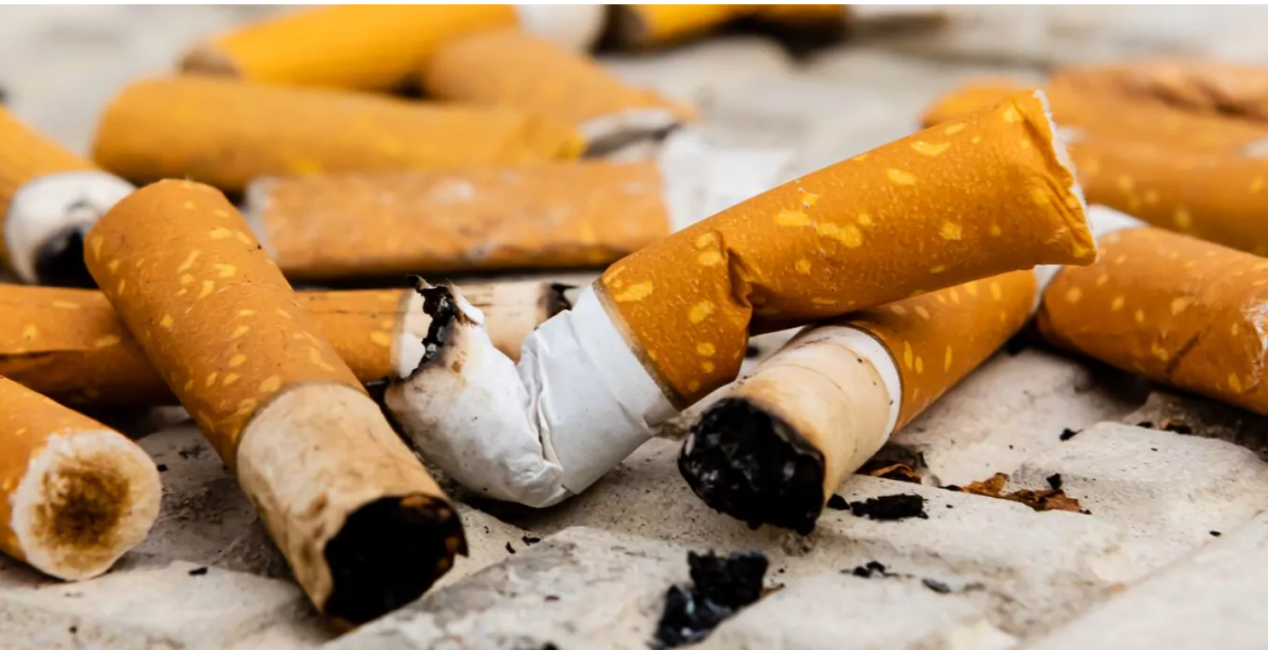
If I asked you what the most common form of plastic pollution is, what would you say? Plastic bottles? Straws? Bags? All good, but incorrect guesses. Cigarette butts (烟头) are actually the most abundant form of plastic waste in the world, with about 4.5 trillion individual butts polluting our global environment.
But wait, aren’t cigarette butts made of cotton or paper? In fact, cigarette butts consist mainly of plastic and while they may be small so tend to go unnoticed, you will find them practically everywhere. Contrary to what many believe, cigarette butts are not harmless. They are made of cellulose acetate, a man-made plastic material, and contain hundreds of poisonous chemicals. While cigarette filters, or the plastic part of butts, can take up to 10 years to completely degrade (分解), the chemicals they release can remain in the environment for many more years beyond the life of the cigarette butt itself.
These remaininng poisonous substances include arsenic (also used in rat poisoning), lead (a poison that can affect the brain development of children), and nicotine. When these chemicals are improperly thrown on the street corner, out the car window, or down a drain they slowly pollute our natural water and soil systems, presenting a serious threat to people and the environment.
Cigarette butts are by far the largest single type of litter by count. Since the 1980s, cigarette butts have consistently accounted for 30-40% of all items picked up in annual international coastal and urban cleanups. This further stresses the need for comprehensive approaches to not only managing waste, but also controlling tobacco use and mitigating its broader environmental impacts. Moreover, the new World Health Organization report states that tobacco farming contributes to nearly 5% of global deforestation, with 200,000 hectares of wood biomass (生物数量) lost per year.
For five years, EARTHDAY.ORG has been driving cleanups worldwide through The Great Global Cleanup. You can join us on this journey by signing up to either join or create your own clean up event. You can encourage others to do their part as well by reminding them of the dangers of smoking and by advocating for more comprehensive waste management systems.
1.Why does the author raise the questions in the first paragraph?
A To give a warning.
B To offer some advice.
C To introduce the topic.
D To prove a certain fact.
解析:选C。C 推理判断题。作者在文章开头提出问题,并通过回答这些问题提出“烟头实际上是世界上产量最大的塑料垃圾”,从而引出下文对烟头的相关介绍。故选C。
2.What is a common belief about cigarette butts?
A They are easy to be noticed.
B They are made of plastic.
C They hardly release chemicals.
D They don’t cause any harm.
解析:选D。D 细节理解题。根据第二段中的“Contrary to what many believe, cigarette butts are not harmless.”可知,与许多人的看法相反,烟头并非无害,由此可知很多人认为烟头是无害的。故选D。
3.Which of the following can replace the underlined word “mitigating”?
A Easing.
B Assessing.
C Understanding.
D Monitoring.
解析:选A。A 词义猜测题。根据前文的“managing waste”以及“controlling tobacco use”可知,治理垃圾和控制烟草使用都是急需的,并且还要减轻烟草使用对环境的影响。故选A。
4.What’s the purpose of the last paragraph?
A To share more information about cigarette butts.
B To appeal to readers for efforts in clearing out waste.
C To tell what EARTHDAY.ORG has been involved in.
D To show the overall results of removing cigarette butts.
解析:选B。B 推理判断题。结合最后一段中的“You can join us...”以及“You can encourage others...”可知,作者在最后一段中呼吁读者一起加入清理垃圾的行列。故选B。